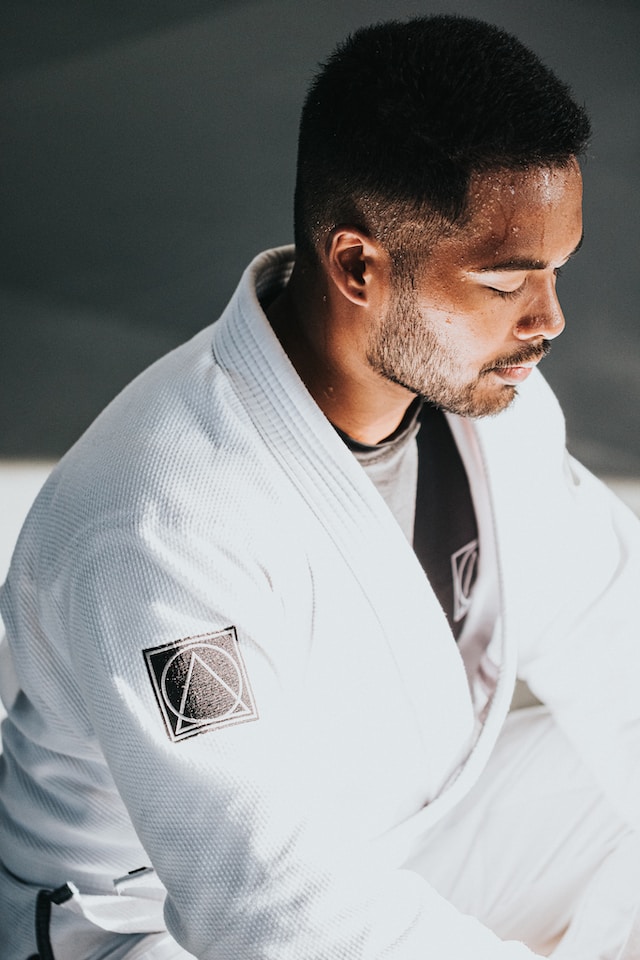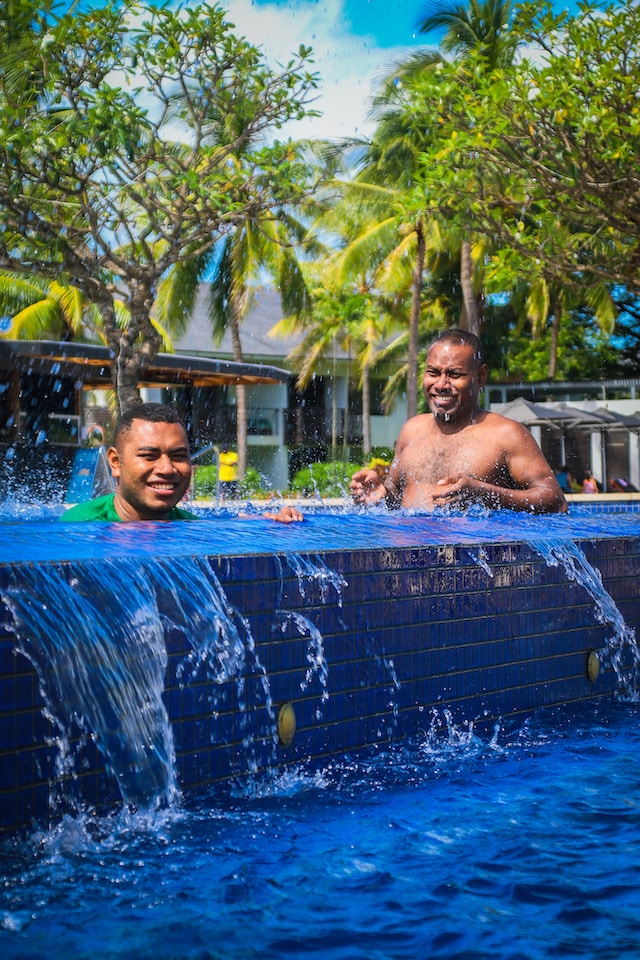The more we move, the more oxygen we intake. This doesn’t necessarily have to be exercise, just continuous movement in our daily lives. Oxygen is the fuel for every cell in our bodies.
Once ignited, it generates energy and enhances our ability to repair cells and tissues. Oxygen also improves blood flow and lung efficiency.
Researchers have asked older women to walk for half an hour every day and found that this alone is enough to reduce the risk of respiratory diseases.

Moderate Movement and Adequate Physical Activity
Exercise raises body temperature, leading to sweating and cooling down. As a result, we drink more water, which improves other conditions. Increased sweating also helps the body eliminate toxins.
The body’s detoxification system brings other benefits as well. A study published in the Journal of the American Medical Association focused on 3,000 women undergoing breast cancer treatment.
The results showed that those with hormone-responsive tumors who walked fast for three to five hours per week had a 50% lower breast cancer mortality rate compared to women who remained sedentary.

Exercise just make you better
During exercise, the heart works harder to deliver more oxygen throughout the body, especially to the muscles that need it the most. This increases capillary action, allowing even the smallest blood vessels to carry oxygen to cells, benefiting the overall cardiovascular system.
Additionally, extra oxygen increases the number of red blood cells. Exercise increases energy demand, accelerating the natural process of metabolism and clearing out more cellular debris. Physical activity increases lymphatic flow, aiding in disease resistance.

Move your body now
When our activity level is sufficient, it amplifies the benefits. By increasing oxygen saturation, improving body alkalinity, hydration, quality nutrition, and detoxification, we can achieve optimal health. Just by starting to move, we can bring these factors to their highest levels.
We should frequently move our bodies, but most of it can be moderate movement, such as walking or doing activities that require moving our feet, and preferably without shoes. This allows us to exercise the often neglected muscles in our feet, improves balance, and strengthens overall connectivity.
Recent studies have linked prolonged sitting with increased mortality risk. Scientists believe that sitting posture alters our metabolic function. They are not exactly sure of the reasons, but the connection exists. If you can stand, then stand, as it can contribute to a longer and healthier life.

Short-Duration High-Intensity Exercise
We should also engage in short-term high-intensity activities to unleash the full power of our bodies. For us, activities like short-distance sprints, swimming, and cycling at full speed are more effective than running on a treadmill for more than half an hour and are more enjoyable.
Just five minutes a day is enough; there’s no need to feel like you’re at the gym. Whether it’s chasing children or dogs, jumping up and down, climbing trees, hitting tennis balls against walls, or practicing some air boxing, anything that makes you breathe heavily and sweat is good.

These short bursts of high-intensity exercise bring significant health benefits, improving metabolism, muscle strength, agility, and endurance, boosting natural growth hormone and testosterone levels, and strengthening anti-aging factors.
weightlifting or resistance training
We should also try weightlifting or resistance training, even using just our body weight, to maximize muscle strength. Yes, this applies to women too! You won’t become bulky from weightlifting. The myth that weightlifting makes you look bulky has been circulating for too long.
Even if you lift heavy weights, it won’t make you produce male hormones.

Better balance
When we force our muscles to perform challenging movements, they become stronger. The lean tissue we build today will benefit us for a lifetime. Nobody wants to become an elderly person who can’t get up after a fall.
Having a habit of weight training ensures that we have the strength for various daily activities. In response to stronger muscles, bone density also increases, reducing the chances of osteoporosis.
In addition, exercise can cultivate a sense of balance, making us less prone to falls and less likely to suffer fractures even if we do fall. We have the strength and energy to stand upright.

The old mindset of “weightlifting training” is kind of outdated.
Now we know that the focus is not on how much weight you can lift but on maintaining proper posture and engaging in multi-joint movements to maintain the body’s proper mechanics. This includes exercises like kettlebell swings, burpees, Romanian deadlifts, as well as bodyweight exercises like push-ups, pull-ups, squats, and lunges.
We don’t even need traditional “exercise”; just go outside, tidy up the garden, or walk a little extra every day.
There are so many ways to move our bodies today. If it’s not convenient to go to the gym or you don’t have anyone to walk or bike with, you can do yoga by playing a DVD or “join” high-intensity training groups in your own private space, such as programs like P90X, 21-Day Fix, or T25.

Try Something You Can’t Do to Do More of What You Want to Do
Dan Buettner wrote in his book “The Blue Zones” that he visited some places where residents lived long and active lives. The first lesson he learned from these healthy elderly people was to move naturally. “They engage in regular, low-intensity physical activities, often as part of their daily routines,” he wrote.
Find something you enjoy in life and do it well. Don’t make things too complicated; just move regularly, seek pleasure, play well, and enjoy long-term health benefits.
Editor

We need to respect our bodies, which are the vessels that allow us to engage fully in the physical world. I train with the god of surfing, Laird Hamilton, who has shared some wise words: “Try something you can’t do to do more of what you want to do.”

Of course, I couldn’t conquer hundred-foot waves or perform feats only Laird can do. However, this means we should try new and challenging activities that push our limits. It’s the only way to make ourselves stronger.
When exercising, I challenge myself to improve my reaction skills, my ability to have fun, and to show my love for life. I don’t want to be limited by what my body can or can’t do. I want a supercharged life! Being able to play, move, and do what I want is important to me.
However, exercise shouldn’t be monotonous. Turn exercise into a game, a competition, even if it’s just competing with yourself. Do something that requires your full effort, like a child would.

Start with small change
Exercise intensity is your friend; it stimulates the release of growth hormones, making your muscles stronger. Don’t just step heavily on the treadmill, sit motionless on an indoor exercise bike, or lie on a bench pushing dumbbells repeatedly.
We need to go from one extreme to another, from complete rest to giving our all, going all out. Let our actions be less predictable. Add a bit of chaos, but do so wisely and in control.
Just like when playing basketball, you start with a slow jog, suddenly find yourself under the basket, and the game becomes intense. You jump, block shots, run fast in small corners, throw, catch, and shoot. Then the basketball flies back into the court, and this scene repeats.

Moving at high speeds or lifting weights with all your might is not only healthy but also feels wonderful. In these moments, you will understand the joy your muscles can experience.
High-intensity exercise releases a significant amount of dopamine into the bloodstream, and even if we can’t be called athletes, we can still feel the thrill of being one. It’s pure physical pleasure, reaching this level is a marvelous thing that nourishes the soul and reminds us of the meaning of life.
Editor’s Experience
I believe that the deepest part of the human body relies on activity. Physical activity can heal us, allowing our internal systems to function optimally, preventing illness and inflammation.
To promote physical healing, achieve optimal health, activate the brain, and trigger mechanisms such as the production of neurotransmitters like serotonin and dopamine, as well as obtain proper sleep to fill life with brightness, all of these rely on physical activity.

If we cannot obtain energy through physical movement, we may seek it from caffeine, energy drinks, or cigarettes.
Chemical stimulation triggers the adrenal glands, leading to metabolic and hormonal imbalances, causing inflammation, poor sleep, digestive system disorders, high blood pressure, and other unhealthy conditions.
If physical activity is insufficient and we are not tired enough at night, we rely on medication or alcohol to fall asleep.

Being Happy is no.1 rule
In the past, it was believed that after surgery, one should stay in bed to recover, or it was better not to move a injured body part. Now we know that the opposite is true, as physical activity is an important part of the recovery process.
Research shows that without using our muscles, we will lose a significant amount of muscle mass. Not engaging in activities that maintain fitness will result in either becoming weaker or more vulnerable.
However, it is not necessary to shape oneself into a particular physique; it is not the path to follow, and there is no need to emphasize body shape. I have seen people go to the gym every day without any changes in their bodies, and they don’t feel any better. You should feel happy; that is the only important thing.

What matters is not having a perfect physique or following a perfect exercise routine. You just need to demonstrate vitality. The sun rises today, and you are alive, able to access the necessary air, water, and food. So, how are you going to make use of these elements?
I exercise with a group of friends six times a week, ranging from the youngest in their twenties to the oldest beyond retirement age.
We go to the gym for three days and to the swimming pool or the sea for another three days.
We surf together.
We all lead busy lives but still find time every day to move our bodies.
We put in our best effort during exercise and find joy in it.

We set aside our pride, teasing each other mercilessly, venting frustrations, sweating, and laughing, but we also encourage one another, ensuring that everyone is doing things correctly, so that everyone becomes stronger and no one gets injured.
Now, it’s not just about exercise for us; we have become a group of buddies, caring about each other’s lives and everything in between.
As adults, we’re doing pretty well, but we are still not as good as ordinary children. Children don’t “work out”; they “play.” They move, motivate themselves, compete, exhaust themselves, not because they think they should, not because doctors tell them to, but simply for the fun of it.

That is the best reason to do anything. When other reasons don’t work, and even the need to maintain health fails to convince us to exercise, pleasure is the best motivation.
To achieve a good physique, the best approach is to make it more enjoyable. Exercising with my friends is truly endless fun.


